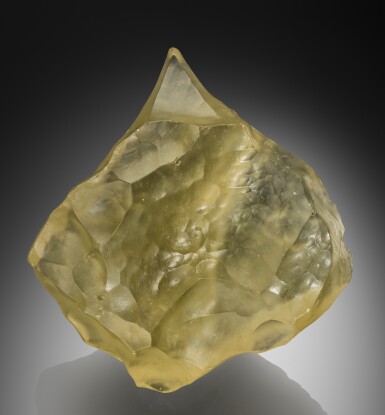
Libyan Desert Glass | When An Asteroid And The Earth Collide
No reserve
Lot Closed
December 3, 09:02 PM GMT
Estimate
750 - 1,250 USD
Lot Details
Description
Libyan Desert Glass — When An Asteroid And The Earth Collide
Impactite
The Great Sand Sea, Sahara Desert, Egypt/Libya border region
90 x 83 x 36mm (3.5 x 3.25 x 1.33 in.) and 191.9 grams
Libyan Desert Glass is a tektite, i.e., silicated glass formations whose name comes from the Greek tektos, meaning “melted”. Tektites are named for the locality in which they are found, hence: Australites, Indochinites, Philippinites, Libyan Desert Glass, etc. They are the result of asteroid impacts slamming into and melting the Earth’s surface; the extraordinary heat and pressure liquefies terrestrial rocks, which are splashed into the upper atmosphere before returning to Earth as solidified glass. Tektites are terrestrial in origin and the impact event responsible for Libyan Desert Glass is known to have occurred approximately 28.5 million years ago in the southwestern corner of the Great Sand Sea near the Egyptian/Libyan border.
The higher the silica content of the material melted, the lighter the color. Libyan Desert Glass is 98% silica (molten sand) and is yellow-hued whereas other tektites range from green (moldavites) to charcoal (indochinites). Now offered is a translucent sample of a golden tektite from North Africa. Signature scalloping is seen on a surface that has been naturally sandblasted by Saharan winds for millions of years. Libyan Desert Glass was used as a gemstone as long ago as Pharaonic Egypt; an especially coveted specimen was discovered in King Tut’s tomb.
